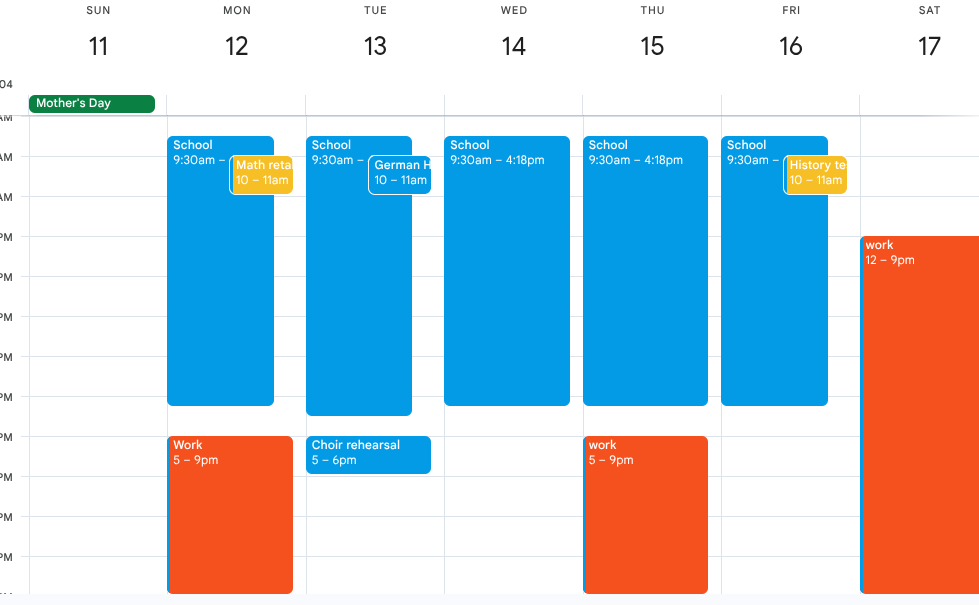Every week, millions of American high school students clock in 40 hours of education through the public school system. During the week and weekends, students work additional hours at part time jobs. How do they manage? The perfect American student maintains high academic performance, extracurricular activities, and a job, which in turn leaves them with no relaxation time. Within the Leesburg community, a variety of students maintain this perfect American student lifestyle, but how does it affect them? Is it actually healthy to lead a lifestyle with very little down time?
Students across the Leesburg community can be found working part-time jobs in fast food, grocery stores, clothing/department stores, retirement homes, and even restaurants. These students work for minimum wage to reach a variety of financial goals such as saving for college, paying for their first car, or trying to save up for their favorite brand of shoes. This results in students working 5 to 25 hours a week on top of school.
Hypothetically, if you are managing schoolwork and maintaining employment, students also participate in a variety of extracurricular activities from sports to theatre to clubs. Audrey Acerno, a senior at Tuscarora High school, manages a job even as she wears the hats of the Vice President of the Environmental club, Social Media Manager of the Photography club, and is also a member of Tuscarora Performing Arts. On top of spending about 50 hours a week in school and an additional 5 hours of homework a week, she works 15 hours a week. “When work is slow, I like to work on my homework and study to utilize my time properly,” she shares. Additionally, she maintains a high academic performance by using planners, using Tusky Time and her study hall to complete classwork, and doing homework in the mornings when she doesn’t have any activities.
Students leading such eventful lives find themselves under constant pressure and struggle to maintain their academic performance. School should always be a priority, but extracurriculars, leadership roles, and job duties become overbearing and sometimes divert school student’s attention to the wrong areas of focus. Amira Noutcha, a senior at Tuscarora High School, shares how she struggles to manage a concierge and highschool. “My academic performance was slightly affected because of having to work evening shifts on Tuesdays, Fridays, and every other weekend. Sometimes, I am not able to complete classwork due to unexpected situations that arise during my shift,” Noutcha expresses.
So many students find employment before realizing how challenging it is to maintain previous academic performance. Additionally, students have to adjust to working on weekends or after school, thus, taking away time for relaxation and studying. “My least favorite part of working is the long hours and the stress that working can bring sometimes,” Isabelle Rutyna, a junior at Tuscarora High School, shares. Working can result in financial gain, but it comes at the cost of additional stressors that linger on a student’s mind.
So why are students expected to perform at such high levels? Adults are expected to only maintain a 40 hour work week while students maintain 60-70 hour work weeks without pay. In addition to maintaining such a busy schedule, adolescents have to learn to manage their time and prevent stress from destroying their mind and body. Fortunately, there are a variety of mental health resources within schools, communities, and the internet that can help students learn to maintain a school and work life. Additionally, students should find employment in places that allow for flexibility in their schedule as needed. There are many jobs out there that account for a student’s 40 hour school week and strive to provide balance between the two, setting up students for success.












